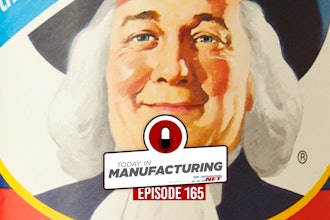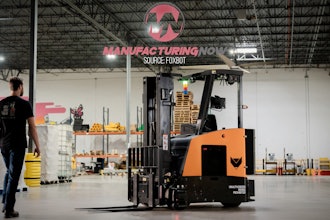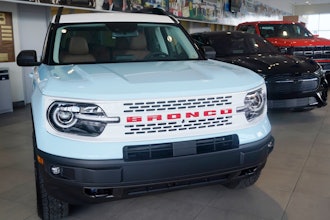Intermodal transportation has come a long way in the past 20 years. Railways are more secure, economical, consistent and environmentally-friendly.
Robert (Bob) Bomba and Jane Malamisura, transportation experts and owners of JEM Transportation, an independent agency of Landstar Global Logistics agree that intermodal transportation has been on the rise.
“Manufacturers used to ask ‘What is Intermodal?’ Now we are at the point where most companies know what intermodal transportation is and see the benefits to using this mode to ship their goods,” says Jane.
Intermodal involves the transportation of freight in containers using both truck and rail without any handling of the freight itself when changing modes.
“This method reduces cargo handling, and so improves security, reduces damages and loss and may allow freight to be transported faster,” says Bob.
Another key benefit for intercontinental use is the reduced costs versus over road trucking. Manufacturers looking to ship their goods cross-country will find that the longer the trip, the more cost-effective rail becomes compared to roadway transportation.
“For long-distance moves, particularly over 800 miles, intermodal rates are far cheaper than shipping via truck,” says Robert (Bob) Bomba of Landstar Global Logistics. “However, if you’re shipping goods from N.J. to N.C. or Virginia, those would certainly be more viable as over-the-road moves,” he adds.
Intermodal rates have really come down, and their fuel expenses -- even during times when fuel prices skyrocket -- tend to be far less than that of their roadway counterpart.
“We have manufacturers that realize they have maybe one extra day of transit time compared with truck transport, but the cost savings is $500 or $600 less via intermodal in certain lanes,” says Bob.
In addition, as fuel prices rise and freight dries up dramatically, truckers often increase their rates to cover their costs as the number of loads they moves decreases.
“When fuel prices were up $147 a barrel and $4 for diesel at the pump, truckers’ fuel surcharges were up to 24 percent,” notes Bob.
Moving over intermodal versus over-the-road is also more viable. In recent years, driver capacity has dwindled as fewer new drivers join the ranks -- especially for long-distance road hauls. Since intermodal uses more local truckers, there is more capacity.
Is It There Yet?
The railroad’s shipping schedules have become much more consistent and the time spent in transit has decreased significantly.
“Twenty years ago if you were shipping intermodal it would have been a two-week transit. Now it is only takes about one week. The railroads have made great strides in getting their act together and offering consistent services,” says Jane.
Transit times very depending on location, but coast to coast shipping generally takes about eight days.
“If a customer wants to ship today out of N.J. to Calif., we know exactly when they can expect delivery. As a result, manufacturers can now plan how many days out for their deliveries,” says Bob.
With countless railroad lanes available for larger shipments using 53-foot containers, multiple pickups and/or deliveries are possible.
“Deliveries do not have to be within a major city. For example, we can deliver into any part of California -- it doesn’t have to be L.A. or Oakland or Long Beach,” says Jane.
For example, we have a shipment from N.J. that requires a four-stop delivery to California with two stops in L.A. and two stops in San Diego. It is sort of like a LTL (Less-Than-Truckload) shipping in which you transport a relatively small amount of freight, but with intermodal, you can load four shipments on the trucks at the origin and deliver to all four locations versus having to ship each one individually. This can save up to $1300 versus LTL.
Larger logistics companies may also offer ‘track and trace’ programs that allow shippers to view the current status/location of their loads 24/7, which can be helpful when tracking multiple deliveries.
Shipping To Save The Environment
For manufacturers trying to improve their carbon footprint, intermodal certainly fits into their plans as rail transportation uses far less fuel than the same distance over the road.
As an example, Bob points out that four trucks moving 40,000 lbs each going 3,000 miles produces an estimated 17.4 tons of carbon emissions. The same 4 trucks (53-ft containers) put on a rail car produces an estimated 7.0 tons of carbon emissions. Efficient use of fuel means less greenhouse gas and carbon pollution.
“Talk to your shipper to find out if you are shipping your product in the most environmentally-friendly way. Your carbon footprint is important in this day and age,” advises Bob.
Safe and Secure
Not all products are suitable for rail freight, and certain loads will require more inspection than others.
“There are certainly some commodities that are more suited to manufacturers that ship unified loads. Ceramic tile is too fragile and some types of metals are too heavy to be secured properly. So there are some items that would be served better via over the road for the sake of transporting in lighter, more shock-resistant trucks,” says Jane.
“Occasionally, the railroad police will break a cargo’s seal just to inspect the container for safety purposes. For instance, rolls of paper have a center of gravity that can turn over a train, so they do have to be loaded correctly. In other instances, they will inspect containers to ensure Hazmat items are properly secured,” adds Bob.
While railroads do have a good security system and police patrols in place to deter theft, manufacturers should not fully rely on the railroad to keep their products safe.
“A manufacturer should do their due diligence and provide a good solid bolt seal that cannot easily be opened,” advises Jane.
Railroad police will do random inspections to make sure a container’s seal is intact and when deliveries are received, it is important to check and make sure no seals are broken.
Despite the increased safety and security of railroad transportation, if you are shipping high-value products, you might be well served to plant GPS tracking devices randomly among freight on the rail. The devices can be returned at a reasonable cost for reuse on the next shipment, says Bob.
Bob and Jane also advise manufacturers to use a larger, well-known logistics company that is well-funded and can handle insurance claims if something were to happen to your load.
“That’s important for manufacturers because in 2008 over 2500 trucking companies with 5 or more trucks went out of business and they expect 2009 to be just as bad,” says Bob.
“Using a larger company and a major brand ensures that when your freight is out there, it is insured and secured. If you use a smaller trucking company, and they go out of business your freight could get stuck someplace,” he adds.
Robert Bomba and Jane Malamisura have worked in the transportation industry for over 25 years. For more information on shipping via intermodal, contact Robert Bomba at [email protected], Jane Malamisura at [email protected] or visit Landstar Global Logistics at www.landstargloballogistics.com






















